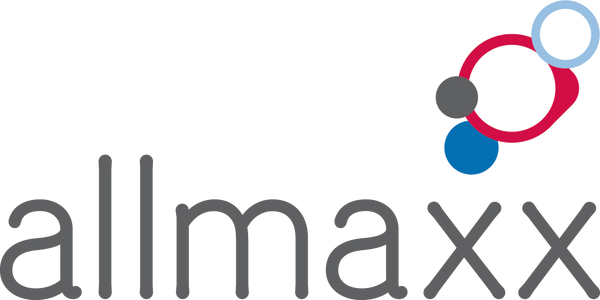Massive open online courses or simply MOOCs are on everyone's lips, a new trend. What exactly is it about, where does the trend come from? Who can take part in the courses, who offers them and why? The article provides an overview.
The years at university are good years. Of course, there is stress from time to time due to exams or deadlines. But a lot of freedom, learning in an area based on your own interests and like-minded fellow students are the cornerstones of an overall fantastic time.
However, the adulation should not obscure the fact that this time of course also has its challenges. To name just one: the student must have enough control over himself so that, even after the occasional and well-ordered student party, he does not nod off in class the next morning, bang his head loudly on the table and thereby attract the professor's attention .
There is now a solution to this problem: MOOCs, Massive Open Online Courses. Instead of going to the university and sitting in lectures, the lectures come to the students via Internet video. The concept is nothing completely new; distance learning courses have been around for a long time, as have instructional videos. What is new, however, is that the MOOCs are open to everyone, there are no access restrictions and the courses are aimed at tens of thousands of students at the same time. What is also new is that the courses are embedded in an overall concept: there are tasks for the teaching videos, there are tests, there are discussion forums and after successful participation there is a certificate. Participation in the courses is usually free of charge and a manageable fee may only be charged for issuing the certificate of completion. Although many courses are aimed at participants without prior knowledge, the quality and level of the offerings are high and the courses are created and supported by universities.
Looking back, it is difficult to determine exactly where the movement began. However, it is largely undisputed that the non-profit company edX - a spin-off of Harvard University - was one of the first companies to operate in the field and offer MOOCs on its website. Attracted by its success, others quickly followed. Coursera offers a total of almost 700 courses from a variety of subject areas, making it probably the largest provider. Udacity focuses on computer science, but also offers courses such as 'How to build your startup', taught by Silicon Valley entrepreneur Steve Blank. So far 204,001 participants have registered, including me.
Iversity is a provider from Germany. The course offering therefore also includes a variety of German-language courses such as 'Clinical Anatomy Head/Neck' from the Anatomical Institute of the Eberhard-Karls University of Tübingen. With a focus on the surgical context, it sounds like a steady hand and tough material. NovoEd focuses on economics topics and, staying true to its focus, tries to charge fees for a few (few) courses.
The top ten universities in the USA now all offer MOOCs. The aim is to offer our own students the latest form of further training and at the same time to impart knowledge worldwide with high-quality MOOCs.
Of course, you can also use it to advertise yourself and attract regular students. Through the courses offered, universities can also learn for themselves and see which courses are popular, which explanations are well understood or at what second in the teaching video many students switch off.
Beyond these advantages, however, a financially sustainable business model has not yet been found. The costs for creating the teaching materials and providing the server and line capacities are not covered by the low certificate fee (if it is charged at all). The large number of course participants also forces providers to take new approaches when implementing this new form of teaching. Who reads and evaluates the essays of tens of thousands
of participants in a literature course?
One solution is to have each student evaluate five additional papers and to also take into account in each student's evaluation how well they have graded papers in the past. But fundamentally, the range of new challenges is broad and ranges from the security and maintenance of the technical infrastructure to the consideration of cultural, legal and regional differences to the monitoring of students during exams, for example via the webcam or via individual typing behavior.
However, it is basically clear that 204,001 students and their identities cannot be completely monitored online. It is therefore not surprising that the certificates from online universities are usually not (yet) widely accepted. But it's not just about a sheet of paper. It's about interest, about curiosity. It's about knowing things, applying that knowledge, and leaving the world better than we found it.
Massive Open Online Courses – Discover Campus 3.0!
On these platforms you can find exciting MOOCs on practically every topic.
Coursera
Currently almost 700 courses from 110 partners from all over the world (including Columbia and Yale University, but also TUM and LMU Munich).
www.coursera.org
edX
E-learning platform of the Massachusetts Institute of Technology (MIT), Harvard University and the Berkeley University of California.
www.edx.org
NovoED
Princeton University is one of the partner universities. The range of courses includes, among other things, the areas of finance, education as well as design and creativity.
novoed.com
Udacity
Private online academy with courses that primarily cover computer science topics.
www.udacity.com
Khan Academy
The non-commercial website, founded by educator Salman Khan, offers a wealth of educational videos in areas such as math, science, and business.
khanacademy.org
iversity
German platform for online courses and lectures. The offering is diverse and ranges from history to medicine to computer science.
iversity.org
OpenCourseWorld
Cross-university MOOC platform for courses on IT and business topics.
www.opencourseworld.de
openHPI
Initiated by the Hasso Plattner Institute for Software Systems Engineering; Courses on IT issues.
openhpi.de
Udemy Free Courses
Free and paid courses from a wide range of areas (including IT and business, photography and graphic design, lifestyle and health, music and sport)
www.udemy.com
iTunesU
The free app provides access to video or audio lectures. There are course assignments and a “direct line” to the course instructor.
itunes.apple.com/app/itunes-u
Stanford Free Courses
Stanford University Platform. Course topics range from quantum mechanics to human rights issues.
http://online.stanford.edu/courses
Carnegie Mellon Open Learning Initiative (OLI)
Topics from areas such as anatomy, biochemistry and psychology are covered.
oli.cmu.edu
Related articles:
- No related articles
Massive open online courses or simply MOOCs are on everyone's lips, a new trend. What exactly is it about, where does the trend come from? Who can take part in the courses, who offers them and why? The article provides an overview. The years at university are good years. Of course there is




